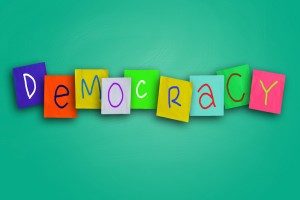Assuming all goes as planned, we should have a new federal education law by the end of the year. Dubbed the Every Student Succeeds Act (ESSA), this version of the Elementary and Secondary Education Act would greatly increase states’ options for evaluating schools and teachers. As this ESSA cheat sheet explains:
States would still have to test students in reading and math in grades 3 through 8 and once in high school, and break out the data for whole schools, plus different “subgroups” of students (English-learners, students in special education, racial minorities, those in poverty).
But beyond that, states get wide discretion in setting goals, figuring out just what to hold schools and districts accountable for, and deciding how to intervene in low-performing schools. And while tests still have to be a part of state accountability systems, states must incorporate other factors that get at students’ opportunity to learn, like school-climate and teacher engagement, or access to and success in advanced coursework.
Or access to, support in, and success in a knowledge-rich, well-rounded elementary curriculum.
Under pressure from high-stakes accountability and as a result of misconceptions about the role of knowledge in developing skills, elementary schools have reduced science and social studies to just 16 to 24 minutes a day. That’s the average time allocation, according to a nationally representative survey of teachers, which means many schools spend even less time introducing children to our world. Worse, the kids who are least likely to have opportunities to learn science and social studies outside of school are the most likely to attend schools that narrowly focus on reading and math—with the bulk of the day devoted to language arts.
It is not working.
The notion that nothing is more important than reading is understandable, but it’s also self-defeating. Kids who don’t get to study science and social studies—especially in the early grades—don’t become great readers. They become, as Susan Neuman says, “word callers.” They learn to sound out words, but then they don’t know what those words mean. Science, history, geography, music, and art, if rigorously and enthusiastically taught throughout elementary school, are the cure. These are the subjects in which children acquire academic vocabulary, not to mention the essential conceptual knowledge that prepares children for more in-depth studies in later grades.

“Democracy” is relatively easy to sound out, but relatively difficult to understand. To develop real readers, in the early grades we must teach science, social studies, the arts, and how to sound out words. (Image courtesy of Shutterstock.)
With ESSA, states could strategically develop indicators that incentivize building knowledge and vocabulary. Even a simple indicator—such as requiring at least 150 minutes per week on science, another 150 on history and geography, plus 60 on music and art—could send a strong signal on priorities. That signal would be even stronger if schools had to ensure that all students met these minimal time requirements. Right now, far too many schools pull students out of science, social studies, and arts classes for remedial reading and math.
States that want to go further could specify a grade-by-grade core of topics to be taught in elementary school, and then ensure that the passages on the reading comprehension tests in grades 3–5 were on those topics—and only those topics. Radical though that sounds, it’s actually pretty similar to what happens in our most revered tests, Advanced Placement, in which detailed course syllabi leave no guessing as to what will be tested. That’s inherently fairer than the current state assessment regime, in which the topics of reading passages are a complete mystery, thereby privileging the children with the broadest background knowledge.
It’s also more likely to narrow the knowledge gap, which ought to be the number one goal of America’s elementary schools. But even mandating and testing a rich array of topics won’t get the job done. States and schools must do far more to address disparities in opportunities to learn outside of school. Every single day, some kids get an extra dose of academic knowledge and vocabulary at home; others don’t. To actually close the gap, the further behind a child is, the more time he needs in school and the more access he needs to weekend and summer enrichment. Wise states would offer preschool for three and four year olds, require full-day kindergarten, and extend the school day, week, and year for our neediest children. They would also increase funding for libraries, museums, book mobiles, and programs that encourage parents to read to their children every day.
For far too long, our neediest youth have not found out how far behind they are until they are pushed into remedial courses in community colleges or turned down for apprenticeships. This must stop. In the elementary years, the gaps are still small enough to tackle. ESSA gives states the flexibility needed to show real courage—or cowardice. How many will step up?